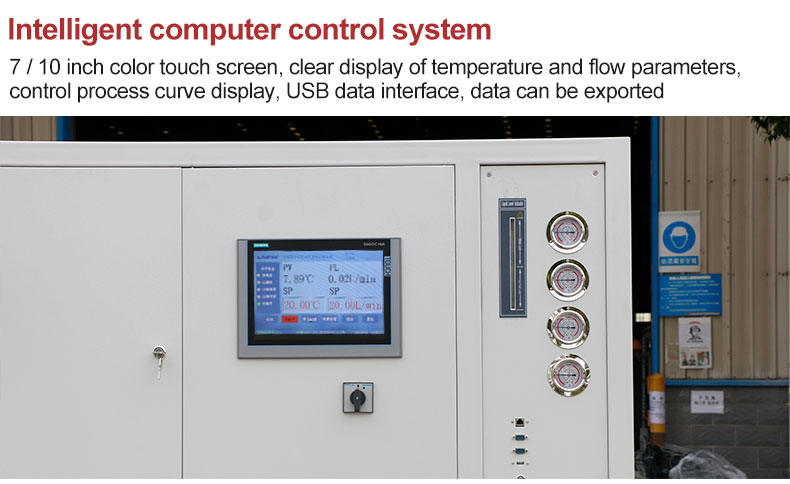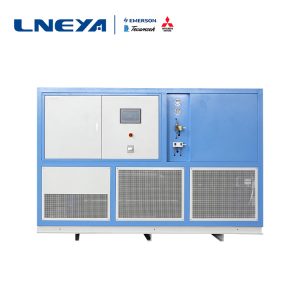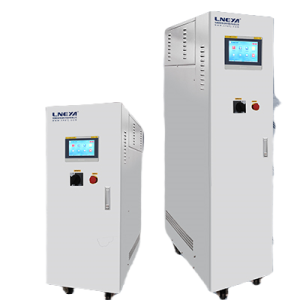Expansion valve description of cooling water circulation machine for electric vehicle parts testing
The demand for electric vehicle parts testing cooling water circulation machine in the testing of new energy vehicle battery industry is rising, so the choice is very important. Among them, the expansion valve is a more important accessory, and we also need to understand its performance.

The electronic expansion valve of the cooling water circulation machine for electric vehicle parts testing mainly consists of four parts. The rotor is equivalent to the rotor of a synchronous motor, and the valve stem is connected to control the opening of the valve hole. The stator is equivalent to the stator of synchronous electronics; it converts electrical energy into a magnetic field. Drive the rotor to rotate, the valve needle is driven by the rotor, the end is tapered, and moves up and down to adjust the flow rate. The valve body is generally made of brass.
Electronic expansion valve suction superheat control, suction superheat control system is composed of electronic expansion valve, pressure sensor, temperature sensor and controller. When working, the pressure sensor will evaporator outlet pressure P1 and the temperature sensor will suck the compressor through The heat is transmitted to the controller, and the controller processes the signal, and then outputs a command to act on the stepper motor of the electronic expansion main valve to open the valve to the required position.
It takes only a few seconds for the electronic expansion valve to change from fully closed to fully open. The reaction and action speed is fast. The opening and closing characteristics and speed can be set manually; the electronic expansion valve can be adjusted within a specific range and the adjustment range It can be set according to the characteristics of different products.
When testing and installing electronic expansion valves for electric vehicle parts, the centerline of the valve body and coil section should be taken as the axis, and the coil should be upward. When welding the electronic expansion valve and the filter screen, the valve body needs to be cooled and protected, so that the temperature of the valve body does not exceed 120°C, and to prevent impurities from entering the valve body. In addition, the flame should not be directed at the valve body, and at the same time, nitrogen should be filled into the valve body to prevent the generation of oxides. The output voltage of the controller must be consistent with the specified voltage of the coil. If the applied voltage does not match the specified voltage, the coil will burn out or the valve needle will act abnormally.
Before installing the expansion valve, please refer to the installation guide provided by the manufacturer to avoid unnecessary failures.
Raccomandazioni correlate
-
How to Maintain Low Temp Chillers
1462Low temp chiller is a kind of refrigeration mechanical equipment which needs to be used in many industrial production operations. It can provide very good refrigeration technology for different production operations and ensure the smooth progress ...
Visualizza dettagli -
Effect of oil separator on ultra-low temperature refrigerator
2011In ultra-low temperature chillers, oil separators are an important accessory. In most cryogenic refrigerators, there are oil separators. What are the effects of oil separators on cryogenic refrigerators? Needless to say, the position of the cryoge...
Visualizza dettagli -
Low temperature cooling chiller for chemical material manufacturing process
15371. Temperature sensitive reactions control many chemical reactions that are highly sensitive to temperature, especially in the synthesis of polymer materials, pharmaceutical intermediates, and other fine chemicals. Low temp...
Visualizza dettagli -
Recommendations for the use of integrated chip test equipment in the test process
1639From the perspective of the entire semiconductor industry, semiconductors can be divided into R & D, production, and application stages. At different stages, the role of testing is different. Control of test equipment, including test machines,...
Visualizza dettagli
 Refrigeratori industriali LNEYA Produttore Fornitore
Refrigeratori industriali LNEYA Produttore Fornitore












